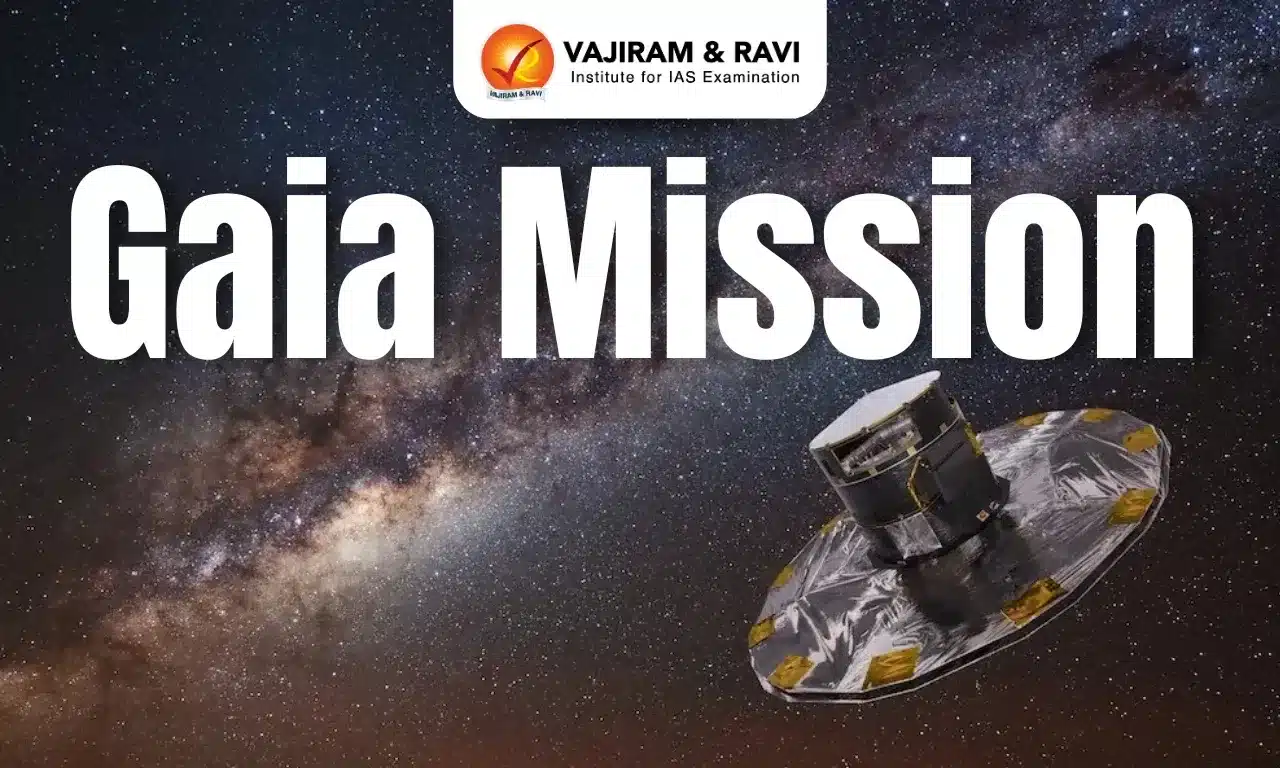Gaia Mission Latest News
On March 27, 2025, ESA confirmed that the space observatory mission, Gaia was “passivated” (drained of energy) and placed into a safe “retirement orbit” around the Sun.
About the Gaia Mission
- Full Name: Originally named Global Astrometric Interferometer for Astrophysics (GAIA), later simplified to Gaia.
- Launched in 2013 by the European Space Agency (ESA), it aimed to create the most precise 3D map of the Milky Way through astrometry (measuring positions and movements of celestial bodies).
- Position: Placed at Lagrange Point 2 (L2), 1.5 million km from Earth (behind Earth when viewed from the Sun), ensuring an unobstructed cosmic view.
- Scientific Instruments:
- Twin Telescopes: Captured light from different directions.
- Digital Camera: Nearly 1 billion pixels, the largest ever flown in space.
- Three Key Instruments:
- Astrometer: Measures precise locations of celestial bodies.
- Photometer: Determines brightness and temperature of stars.
- Spectrometer: Identifies chemical composition and motion of objects.
Key Discoveries of Gaia
- Mapping the Milky Way in 3D: The First precise 3D map of the Milky Way galaxy also helped understand the shape of the galaxy, including:
- The central bar and spiral arms.
- A warped, wobbly disc, likely caused by past collisions with smaller galaxies.
- Ripples in the galaxy from these collisions may have led to the formation of new stars, including the Sun.
- Discovery of New Black Holes: A new class of black holes that are invisible and can only be detected by their gravitational effects.
- Discovered one of the closest black holes to Earth.
- Tracking asteroids and space threats: Gaia identified over 1,50,000 asteroids, tracking their orbits and potential threats to Earth.
Gaia Mission FAQs
Q1. What is the Gaia Space Telescope?
Ans. Gaia is a European Space Agency (ESA) mission designed to map the positions, distances, and motions of over a billion stars in the Milky Way.
Q2. What is the main objective of the Gaia mission?
Ans. The mission aims to create a precise 3D map of our galaxy, helping scientists understand its structure, formation, and evolution.
Q3 When was the Gaia telescope launched?
Ans. Gaia was launched on December 19, 2013, aboard a Soyuz rocket from French Guiana.
Source: IE
Last updated on January, 2026
→ Check out the latest UPSC Syllabus 2026 here.
→ Join Vajiram & Ravi’s Interview Guidance Programme for expert help to crack your final UPSC stage.
→ UPSC Mains Result 2025 is now out.
→ UPSC Notification 2026 is scheduled to be released on January 14, 2026.
→ UPSC Calendar 2026 is released on 15th May, 2025.
→ UPSC Prelims 2026 will be conducted on 24th May, 2026 & UPSC Mains 2026 will be conducted on 21st August 2026.
→ The UPSC Selection Process is of 3 stages-Prelims, Mains and Interview.
→ UPSC Result 2024 is released with latest UPSC Marksheet 2024. Check Now!
→ UPSC Toppers List 2024 is released now. Shakti Dubey is UPSC AIR 1 2024 Topper.
→ Also check Best IAS Coaching in Delhi

















